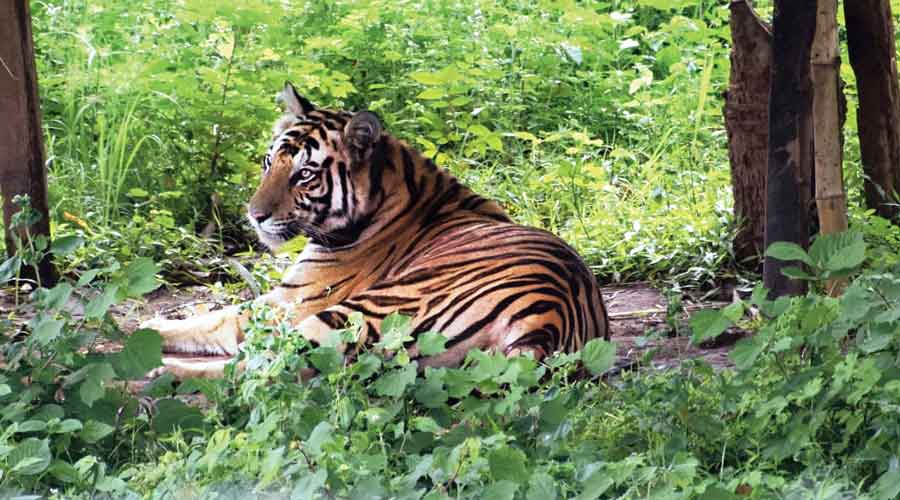Forest officials have been busy for the past two months tracking the lone tigress in Odisha’s Satkosia Tiger Reserve. The tiger reserve spreads along the magnificent gorge of the river Mahanadi.
The reserve with a core area of 523.61sqkm touches the boundaries of four districts — Angul, Cuttack, Nayagarh and Boudh. It is also the meeting point of two bio-geographic regions of India — the Deccan Peninsula and the Eastern Ghats.
Despite hundreds of trap cameras fitted in the core areas of the forest, the officials have failed to get any trace of the tigress.
Now the forest guards have been asked to enter the forest on foot and try to trace her through pugmarks. But success continued to elude them so far. Senior forest officials remain tightlipped on the issue.
“The tiger was last located on November 23. Since then, no mark of the tigress has been found. But we have not lost hope. Our efforts are still on to trace her,” divisional forest officer, Satkosia WildLife Division, Saroj Panda told The Telegraph. The lone tigress is about 15-years-old. Forest officials have suddenly evinced keen interest to locate the animal after Collarwali (who had earned the title of super mom after giving birth to 29 cubs) was found dead in Madhya Pradesh on January 17 due to old age.
Panda said: “Around 100 cameras have been fitted in the core area of Satkosia. Another 300 cameras will start arriving here from Similipal Tiger Reserve for tracing the animal. They will be installed at different locations once we have nearly 400 cameras, we are hopeful of tracing the big cat.”
On being asked whether he suspects the animal having been killed by hunters, Panda said: “The tigress is well acquainted with the area. She is also not old so that she can easily fall into the trap of hunters. However, until we trap her in the camera, it is difficult to reach a conclusion.”
“We have noticed a few pug marks in Tulka and the Raiguda area which are being examined to ascertain whether those are of a tigress or leopard. As the rain washed off it, the process of ascertaining has become difficult,” said officials.
He further said: “We have also noticed carcasses of a sambar deer and spotted deer. But still we are verifying whether these two animals were killed by the tigress or by a leopard.”
Meanwhile, the disappearance of a lone tigress in the Satkosia Tiger Reserve has worried wildlife activists who have demanded concerted efforts to trace her through a camera surveillance system.
In 2004, the reserve had reported 18 tigers. But with the passage of time, the tiger population further dwindled and the number was reduced to just one. Now the reserve is also going to lose the tiger reserve status soon because it has failed to project a single tiger over the years.
Significantly, the first ever inter-state tiger relocation programme in the country was launched in Satkosia Tiger Reserve to increase the tiger population. The Odisha government had brought tigress Sundari and a male tiger Kanha, from Bandhavgarh Tiger Reserve of Madhya Pradesh in 2018 under tiger translocation programme to the Satkosia Tiger Reserve.
The male tiger Kanha, which was above three years of age, was released in the Satkosia reserve on July 6, 2018 and the female Sundari, the four-and-half year-old tigress, was released in Satkosia on August 17, 2018.
However, the male tiger was found dead on October 14, 2018. Sundari was brought to the enclosure on November 6, 2018 after it mauled two persons inside the sanctuary.
No effort was made to release it into the sanctuary again. The tigress was sent back to Madhya Pradesh in March 2021 and subsequent released to suitable habitat there.
Later the National Tiger Conservation Authority (NTCA) had came down heavily on the state government. The NTCA also cited how Odisha had failed to create prey augmentation, inviolate space, eco redevelopment, capacity building of staffs and enhancement of protection. The NTCA has also made it clear that the tiger translocation programme at Satkosia Tiger Reserve suspended till the ground situation in the field improves as per the NTCA guidelines.










